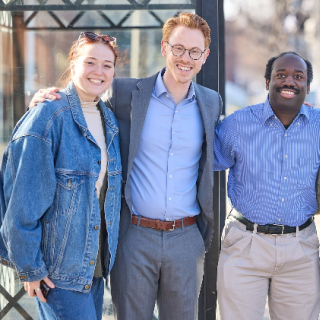Advertisement
Columbus s-CREW-ed
“Save the Crew” fanatics are cheering and celebrating that the soccer team is “saved” and staying in Columbus. Their website touts the wonderful “bright new stadium” to be located to the west of the Arena District. But at what cost is this victory?
The original Crew stadium cost $28.5 million, opening in 1999. History-making in its design – as the first soccer-specific stadium built in the United States – its capacity was listed at 19,968 seats last year. Average attendance was 12,447 for the 2018 season, lowest among Major League Soccer (MLS) teams. After taxpayers refused to build a hockey arena and a soccer stadium with public money, billionaire Lamar Hunt had footed the bill for the original Crew stadium.
Now the Columbus corporate business community and its subsidiary elected politicians are all in a tizzy over a new soccer stadium costing $230 million. The City of Columbus will float bonds to contribute $50 million in public infrastructure for the stadium, such as roads, water, sewage and the like. Franklin County will match with another $50 million for more infrastructure. The Ohio House of Representatives approved $15 million for the project.
Subhead: 32 more seats!
Curiously, the new stadium will offer the same number of seats as the old one – at 20,000 – but the number of corporate suites and loge boxes will double from 30 to 60.
The new stadium is part of a much bigger development project dubbed “Confluence Village.” The men behind it are the Cleveland Browns owners Jimmy and Dee Haslam. The Haslams each kicked in $100,000 for Trump’s inauguration committee. Jimmy’s brother Bill is the governor of Tennessee and the family owns Pilot-Flying J, the 14th largest private company in the U.S. The company gave $300,000 to Trump’s inauguration.
Columbus Mayor Andrew Ginther released a statement December 28 confirming the Crew’s transfer of ownership. He failed to note the $50 million capital investment and didn’t mention the new stadium with its net pickup of 32 seats.
What happening here, is that when the City of Columbus and Franklin County decide to float bonds and build infrastructure – they are making people rich at the expense of average voters and less fortunate areas of town. What would $100 million mean for the west side, the south side, or even the near east side? They do this regularly. Cooper Stadium was not only paid off, but generating profit for the Clippers before the new stadium was built. A massive infrastructure investment of $100 million could have created a thriving community that is historically overlooked, and there would be no new stadium downtown to pay off.
Before you join the victory celebration, you may want to do a web search on “are stadiums good investments for cities.” From The Atlantic on the left to the Brookings Institute in the center, to Forbes and Reason.com on the right – they all conclude that public money in sports stadiums are bad investments. Inevitably, rent and maintenance issues arise and long-term solutions are to have a taxpayer bailout. Just like Nationwide Arena.
Columbus City Council for Decrim
Ann Arbor: 1972. Marijuana decriminalization city ordinance passed, $5 fine for an ounce or less.
Columbus, Ohio: 2019. City Council President wants to start a “conversation” about marijuana decriminalization.
The Free Press, which has advocated for cannabis legalization since its inception in 1970 believes the Council President is doing something positive, albeit 47 years later.
Tentative win for women’s reproductive rights
It was a roller-coaster ride for Ohio legislators and reproductive rights activists on Thursday, December 27. Outside the Statehouse, and at spots all over the state, Freedom of Choice Coalition members gathered to try to stop the legislature from overriding Governor Kasich’s veto of the “Heartbeat Bill.” On December 6, Ohio lawmakers had outlawed abortions after six weeks (presumably when there is a heartbeat detected) with no exception for rape or incest, making our state one of the most restrictive on abortion in the nation. Although Kasich declared the bill unconstitutional on December 13, the state legislators met in a special session two days after Christmas to undo the veto. First, the House voted 61-28 to overturn the veto. But, hours later, the Ohio Senate upheld the veto by just one vote. It takes two-thirds vote of both houses to override a veto. Five Republican Senators voted with Kasich.
Reproductive rights activists are claiming a cautious victory, since incoming Governor Mike Dewine will likely make the Heartbeat Bill law in 2019. Also, pro-choice activists warn that Ohioans should not be fooled that possible presidential candidate John Kasich is on their side. He did not veto the state legislation allowing abortion procedures at 12 weeks and is responsible for some of the most draconian legislation against women’s rights and reproductive health in our state’s recent history.




